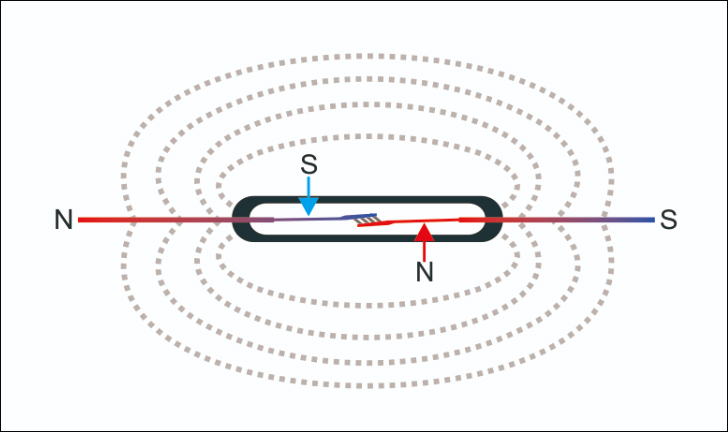The relationship between the reed switch sensor and the magnet is mainly reflected in the reed switch is through the external magnetic field to control the state of its electrical connection of a kind of electronic switching device, the following is a specific description of the relationship between the reed switch and the magnet.
Working principle:
Reed switch is composed of two conductive sheet (called reed), the two reeds to maintain a certain gap between the two reeds, when the external application of a magnetic field, the reed will be affected by the magnetic force and closed, forming a closed electrical pathway. When the magnetic field disappears, the reed will return to its original state due to its own elasticity, the electrical pathway is disconnected.

The role of the magnets:
Magnet in the work of the reed switch plays the role of the trigger. When the magnet is close to the reed switch, the magnetic field will make the reed switch of the reed switch close, so as to connect the circuit. This magnet-triggered change of state can be used to control various electrical and electronic devices. Moving away from the magnet causes the reed switch to return to its original state and the circuit is broken.
The relationship between the distance of the reed tube and the magnet;
The relationship between the distance of the reed switch and the magnet lies in the fact that the distance of the magnet can affect the state change of the reed switch. Specifically, the reed of the reed switch closed or open state depends on the proximity of the magnet. Below are some important points in the relationship between reed switch distance and magnet:
Closed and disconnected states:
When a magnet is close to the reed switch, the magnetic field affects the reed of the reed switch, causing the reed to close, thus connecting the circuit. This is the closed state of the reed switch. When the magnet is far away from the reed switch, the reed will return to its original state due to its own elasticity, and the electrical path is broken, which is the open state of the reed switch.
Magnet distance and response range:
The magnetic response range of the reed switch is related to the distance of the magnet. Usually, when the magnet is close to the reed switch, the reed will tend to close and enter the closed state. As the magnet moves away, the reed will return to the open state at some distance. This response range depends on the design and material of the reed switch and the strength of the magnetic field of the magnet.
The strength and direction of the magnet:
The strength and direction of the magnet's magnetic field also affects the response of the reed switch. Stronger magnetic fields and magnets closer to the reed switch may result in greater reed closure force. In addition, the reed switch is sensitive to the direction of the magnetic field, so care needs to be taken in designing the application with respect to the relative orientation of the magnet and the reed switch.
Combined application of reed switch and magnets;
Reed switches and magnets are often used together in applications such as proximity sensors, safety switches, and magnetic switches. For example, when a door is closed, the magnet on the door moves closer to the reed switch attached to the door frame, triggering a switch state, which can be used in security monitoring or alarm systems. Another example is in counters and position detectors, where a change in the position of a magnet can cause a switch in the state of the reed switch to record the number of events or the position of an object.
In short, the relationship between the reed switch and the magnet is based on the principle of magnetism. The magnetic field of the magnet can manipulate the state of the reed switch, which can be used to control a circuit or detect the position of an object.
 China Neodymium And Ferrite Magnets Manufacturer & Supplier
China Neodymium And Ferrite Magnets Manufacturer & Supplier 


